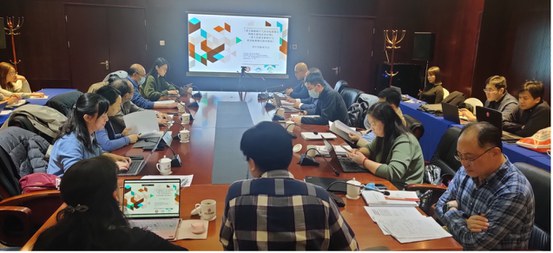Research Reveals Substantial Economic Benefits From Health-Based Air Quality Standards
With more evidence of the health impact of air pollution, the World Health Organization (WHO) updated its Global Air Quality Guidelines in September 2021, sparking a heated debate in China about the revision of the country’s air quality standards. When should China’s standards be updated? At what level? How big will be the benefits? What about the costs, especially the economic impact? How will they be coordinated with China’s carbon peaking and neutrality goals and other socio-economic targets? These frequently asked questions require scientific evidence to respond to, with a first step of identifying what additional research is needed.

Source: Peking University
With the support of Energy Foundation China, two research teams from Peking University have preliminarily identified China’s research needs related to health-driven air quality standard revisions and conducted an economics analysis, respectively. The two teams held a seminar on Peking University campus in early November to present their key findings.
According to the team led by Zhu Tong, Professor of Environmental Science and Member of the Chinese Academy of Sciences, future research on the health effects of air pollution should be focused on four aspects: identifying susceptible people; revealing the health effects of low concentration pollution; quantifying the health effects of compound exposures based on PM2.5 components; and establishing the causal relationship between exposure and human health.

Experts at the meeting appreciated the timely identification of research needs and agreed that it can provide China-specific data and other scientific evidence that will facilitate the revision of the national ambient air quality standards.
Pan Xiaochuan, Professor at Peking University, suggested that the conclusions could be summarized in a more intuitive and statistically significant manner. Li Tiantian, Researcher of the Chinese Center for Disease Control and Prevention, said the next step could be analysis for an optimized air quality standard system, including indicators, limits, and their spatial and temporal scales, to strengthen protection for certain demographics, considering the heterogeneous health effects among different populations. Cai Wenjia, Associate Professor at Tsinghua University, suggested that the team led by Professor Zhu could categorize their findings into near-, medium-, and long-term research needs, and try to zoom in on air quality standards for different regions, provinces, or cities. Jiang Kejun, Researcher from the Energy Research Institute of the National Development and Reform Commission, said that China has to go further in terms of air quality standards to achieve its environmental and carbon goals. He recommended to develop standards that are consistent with these goals and take into account China’s historical experience of air quality standards, the latest WHO guidelines, and the standards’ effects of cutting air pollution and greenhouse gas emissions.
In the second part of the seminar, Professor Zhang Shiqiu from Peking University, project lead for the economics analysis of the national ambient air quality standards revision, said that health benefits can account for more than 90 percent of the total benefits of air standards implementation, and the health improvement comes mainly from lower long-term PM2.5 exposures, especially an decrease in premature deaths. When assessing the mortality risks/deaths, it remains a challenge to apply the existing health benefit monetization methodologies developed for other countries to China, and requires the development of new specifications and key datasets, according to her. A scenario analysis for standard revisions suggests that the full implementation of more stringent air quality standards would better protect public health and generate significant health benefits and substantial economic benefits, she said.

The mortality risk accounts for more than 90 percent in the air pollution health benefits assessment. (Source: USEPA)
When commenting on the research findings, experts at the meeting spoke highly of the economics analysis, and agreed that the study on the value of a statistical life and the recommended parameters can be used to monetize the health benefits in China, while its summary of the abatement actions for key industries and their costs has laid a good foundation for subsequent studies.
Professor Zhang Qiang from Tsinghua University said that the air quality improvement and health benefits of updated standards are with spatial and temporal variability. He recommended to highlight the scenario analysis and the design of mitigation actions for regions suffering from severe air pollution. Hu Jingnan, Researcher at the Chinese Academy of Environmental Sciences, said that the costs could be defined more clearly and consider the cost reductions brought by technological advancement. He also suggested an uncertainty analysis for the next step. Professor Ma Zhong of Renmin University said that the priority mitigation actions can be identified based on the uncertainty analysis, especially those with higher certainty for the near and medium term. Professor Duan Jieyi of Beijing Gas and Heating Engineering Design Institute said that besides health benefits of air quality standard updates the research team could also study the potential correlation between standards and socio-economic development levels to quantify the socio-economic effects of standard revisions. Bai Rongchun, Advisor of the National Technical Committee on Energy Fundamentals and Management of Standardization Administration, said that the feasibility of enforcing the standards needs to be considered when setting air quality standards with high health benefits. He suggested identifying feasible pathways and recommended scenarios in conjunction with oversight needs.
When delivering his closing remarks for the two-part seminar, Liu Xin, Director of the Environmental Management Program at Energy Foundation China, said that these studies are expected to play a key role in supporting the revision of air quality standards in China, with the latest scientific research progress on the dose-response relationship between air pollution and health exposure, as well as the value of a statistical life for different regions and the abatement costs for different industries. He suggested to expand the two studies in the future into a more comprehensive socio-economic impact analysis that covers social, economic, and employment aspects. He also recommended quantifying the additional health risks associated with an aging population in the scenario analysis to better estimate the potential benefits.



